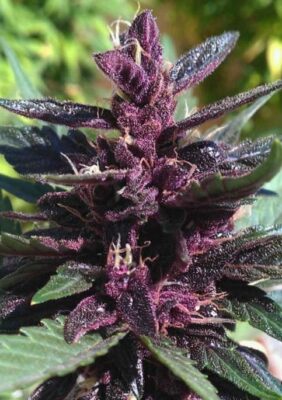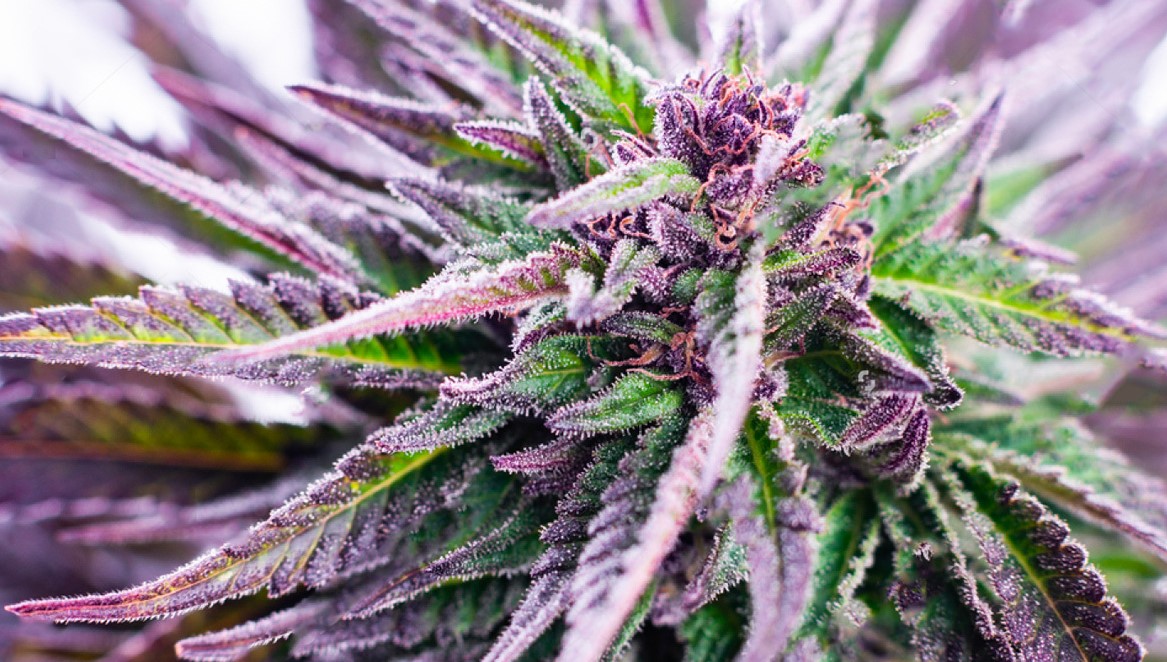Uncategorized
What’s The Deal With Purple Weed?
Purple cannabis is a cannabis plant with a purple color or hues of purple. The coloration is frequently caused by water-soluble compounds called anthocyanins. Indica buds are generally associated with these wine-colored blooms, suggesting they might be sleepy and relaxing.
Today, cannabis enthusiasts can purchase various purple weed strains from their local dispensary. You may also inquire about the greatest purple buds a store has if you don’t know what to ask for.
What Are Some Popular Purple Weed Strains?
There are many different types of purple weeds. While some buds have deep purples, others may only have light mauve or plum hues. It doesn’t matter if one strain is more purple than the other; it’s all about their genes!
If you’re looking for some well-known grape-like strains, we’ve got you covered. Here are a handful of high-quality purple weed strains that you’ll love for more than just their color.
Purple Kush Weed
Purple Kush is a variety that has purple in its name in more than one way. This strain’s dark red, violet, and pink hues make it easy to identify as Purple Kush. It also has a flavor reminiscent of all things purple: grapes, sweets, and wine. If the appearance and delicious taste aren’t enough, it’s also 100% indica so you can relax deeply giggly and happy.
Grandaddy Purple Weed
 Granddaddy Purple is a unique, highly sought-after purple variety derived from a mix of Purple Urkle and Big Bud. Ken Estes, an American cannabis breeder, created this indica-dominant purple plant strain in the early 2000s and it has since remained popular.
Granddaddy Purple is a unique, highly sought-after purple variety derived from a mix of Purple Urkle and Big Bud. Ken Estes, an American cannabis breeder, created this indica-dominant purple plant strain in the early 2000s and it has since remained popular.
The fragrance is pleasant, with notes of grapes and berries. Users turn to GDP to treat pain, stress, loss of appetite, and sleeplessness.
After usage, users experience euphoria, drowsiness, relaxation, and increased hunger.
Purple Haze Weed
Purple Haze is a very rare, 100% purple sativa strain that is highly valued worldwide. This purple marijuana plant is extremely popular, and it was named after Jimi Hendrix’s 1967 song Purple Haze.
The flavor is earthy and sweet, and its scent will bring to mind berries and spices. Purple Haze is a popular choice because of the inventiveness it stimulates in users.
Obama Kush Weed
If a weed strain is named after Barack Obama and yet fails to meet expectations, it wouldn’t be right. We assure you that the qualities of this purple marijuana are not only in its name. It may not be as purplish as the ones mentioned previously, but it does have subtle purple tints and has gained popularity among users for its potency.
The strain is named for its flavor, which has characteristics of both citrus and coffee. It’s a cross between Afghan Kush and OG Kush, with a powerful euphoric high.
Sour Grape Weed
The name “Sour Grape” tells it all. This purple strain is renowned for its fruity aroma, as the name implies. Sour Grape is an indica-dominant combination of Sour Diesel and GDP with a tinge of sourness to boot. We’d characterize this strain as strong, pure, and oh-so-purple.
This one is a must-have if you want to feel energetic and calm at the same time. Its relaxing properties make it ideal for stress therapy, and customers have also reported that it aids in the relief of muscular tightness.
Myths and Facts About Purple Weed Flower
There is a lot of information flying around, with various stories describing how the purple marijuana flower evolved. The majority of these stories are based on what causes marijuana to be purple and what cultivators do on their farms to develop these cannabis strains.
Let’s examine some of the common misconceptions about how purple cannabis strains are created.
Myth #1: Excessive nitrogen application
Nitrogen is unquestionably required for the development of marijuana. It is, in fact, one of the most essential macronutrients for cannabis plants at different stages of their development.
A macronutrient is a nutrient essential for plant growth and survival – nitrogen affects plant development, productivity, and yield.
While nitrogen is essential, it may also be excessive. Beyond recommended application, an excess of nitrogen might harm your plant, according to extensive research on the impacts of nitrogen on medical cannabis. And you’ll receive browns (no pun intended) rather than purps.
Myth #2: Watering regimens
Some people think that watering a cannabis plant on a set schedule or not watering it at all within a given time period will induce the plant to turn purple.
The idea that cannabis plants develop purple flower in the wild due to a scarcity of water is incorrect. Cannabis plants also grow in the wild under various conditions with varying water availability, and while they adapt to changing amounts of water supplied, none of the changes result in purple marijuana flower production.
Myth #3: Depriving the plant of oxygen or carbon dioxide
You may have heard that overwatering your cannabis plant will prevent the root’s oxygen absorption and cause the leaves to turn purple as an extension of water scheduling. Alternatively, if you maintain your cannabis plant’s CO2 supply at a low enough level, you’ll be ready to harvest purple buds in no time.
Some farmers may have tried these starvation methods to induce purple coloration in their cannabis, but many others have attempted and never obtained that result. The most essential thing to keep in mind is that O2 and CO2 are significant for cannabis plants. Depriving your plants of one or both will severely impact their metabolism, causing a sickly plant with a poor yield.
You may be achieving a color similar to the one you desire, but not the potency or profusion of harvests that your plant would have given you. So, which do you prefer: lovely flowers or purples that are too potent?
Myth #4: Light cycle and high intensity get you purple flower weed
The amount of light a cannabis plant receives may influence how quickly it grows during the vegetative stage, as well as when it flowers. Stories are circulating that with long-term lighting and increased illumination intensity, one can end up with purple marijuana blooms in the quest for purpleness.
However, there is another factor to consider:
- If the coloration is included in the genetic makeup of the parent plant, you can only obtain a purple hue.
- You don’t have to use a lot of intense light. In fact, using too much light might cause you to get yellow leaves, which is usually an indication that your plant is sick.
If you want your cannabis plants to thrive, you should avoid subjecting them to any harsh circumstances, as these urban legends claim.

3 Facts About Purple Weed Flower
Now that you’ve heard some of the most common misconceptions about purple bud, let’s talk about what’s true. What causes marijuana to be purple in the first place? What does cannabis with a violet hue do?
Fact #1: Anthocyanins make weed purple
Are you wondering why marijuana is purple? The answer is anthocyanin. Anthocyanins are phytochemicals found in the flavonoid categories responsible for plant colors such as red, purple, and blue. Because of anthocyanins in blueberries, they are blue, and these natural compounds are also behind the brilliant color of purple cannabis.
Purple coloration in marijuana is caused by the presence of anthocyanin pigments, which Marijuana Botany states that a marijuana strain must have in order to turn purple. That is, when all other variables are equal and favorable to the process.
Fact #2: Purple weed flower is not a cannabis superpower
What are the effects of purple cannabis? Is there anything unique about it?
Purple weed strains are popular among consumers because they believe that they will offer them something brand new. However, the color of a plant’s leaves should not be used to judge it. There is no scientific proof that purple weed strains are any different from others based on their hue. The color may attract you, but there’s more to it than meets the eye.
Beyond the colors, a weed strain’s strength is primarily determined by its genetic composition. Next time you have Purple Haze cannabis and feel extremely calm, understand that it has nothing to do with its color and everything to do with its cannabinoids, terpenes, and other compounds.
Fact #3: Genetics and temperature play a significant role in purple weeds’ hue
If you want to know how to cultivate purple cannabis, ignore all the false information and concentrate on two things:
- Genes – All it takes is the right seeds. To grow purple cannabis, you must nurture the appropriate seeds with the genetic potential to create anthocyanins. Yes, nurture certainly has a role in revealing marijuana plants’ natural qualities, but nature provides the blueprint, or shall we say purpleprint? You plant Purple; you receive Purple. It’s that easy.
- Temperature – The purple color of cannabis is caused by the presence of anthocyanin, a pigment found in many plants that causes some to turn blue or violet. The seeds should be planted with the right ones at the ideal temperature for producing the purple hue is necessary. During the flowering phase, experts recommend simulating cool weather, just as it does during autumn. Cannabis plants with anthocyanin undergo similar changes in foliage color as other plants during fall.
You’ll be well on your way to developing purple marijuana if you have these two in place.
Final Thoughts
Under the proper circumstances, certain cannabis strains have a natural propensity to become purple. If you cultivate one of these strains, it will provide you with an amazing show of foliage at harvest time.
However, no matter how hard you try, most strains will never become purple. In such situations, you’re more likely to harm your plants than affect their color. As a result, it’s generally best not to attempt it.
We are naturally drawn to anything different, and no one can deny that purple cannabis is breathtakingly gorgeous. So, if you’re tired of green and want to try something new, why not produce purple marijuana? Tell us how it goes!


